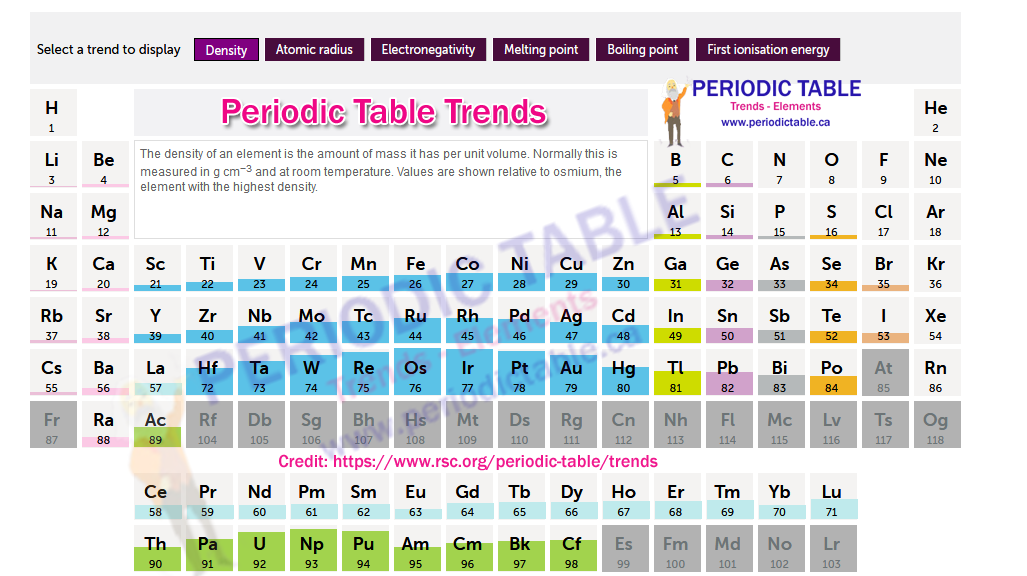Trends periodic table
Periodic Table Trends
The periodic table of elements (often shortened to just ‘the periodic table’) is one of the most iconic images of the sciences, particularly chemistry. It is a visual categorisation of the individual elements into rows and columns based on their chemical properties and electron structure. The organisation of the periodic table of elements allows scientists (and science students) to predict how an element will look and behave. It was first suggested in its current format in 1869 and, although many elements have been added since, the fundamental rationale, structure and layout has remained the same since then.
Organisation
The periodic table of elements is organised into rows (periods) and columns (groups). These reflect the patterns and characteristics of the different elements. Elements within a group, for example, will have very similar characteristics, but aspects may become more pronounced as you travel down the group (i.e. as the period increases). The precise characteristics of any particular element can be estimated from the position of the element in the periodic table.

Trends across groups within the periodic table
As already mentioned, groups within the periodic table of elements share many characteristics. The most important of these is reactivity. This is a measure of how easily the element forms combinations (known as compounds) with other elements.
Each group on the periodic table has a set number of electrons in the outer shell (this is also known as the number of valence electrons). Thus the first group (which starts with hydrogen, with an atomic number of 1) has a single electron in the outer shell. This group is known as the alkali metals and is highly reactive, as the electron in this outermost shell is able to form bonds easily with other atoms. The more electrons in the outer shell of an atom, the more stable the atom and the less it is inclined to form chemical bonds. Thus groups with more electrons in the outer shell are less reactive than those with few electrons in this shell. Elements in the final group (group 18) of the period table are the noble gases, which are almost completely chemically inert, meaning that they do not react with any other elements to form compounds. This provides a clear demonstration of the ways in which the groups within the periodic table share characteristics.
Trends across periods within the periodic table
Periods also have some characteristics and there are patterns as you move down the periodic table of elements as well. As the period increases, the elements have increasing numbers of protons. This means that an atom of hydrogen in group 1 period 1 has only one proton, whilst an atom of rubidium in group 1 period 5 has 37 protons. Because an atom has the same number of electrons as it does protons, this means that the atom of rubidium in period 5 has 36 more electrons than hydrogen in period 1. These 36 electrons form complete shells, meaning that they don’t have as much of an impact on the reactivity as the valence electrons in the outermost shell but they increase the distance of the valence electrons from the protons and neutrons in the nucleus (centre) of the atom. This means that the electromagnetic forces holding the valence electrons in place in elements in period 5 are weaker than those in period 1, making it easier for the atom to lose electrons, but harder for it to gain them. If the most common way for the element to react is to lose an electron (for example, metals) then the reactivity will increase as you move down the group. If the atom needs to gain an electron to react (as is true of most non-metals) the opposite will be true, meaning that non metals in period 1 are more reactive than those in period 5.